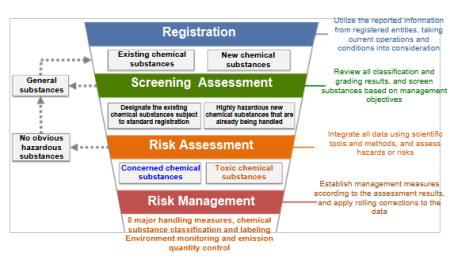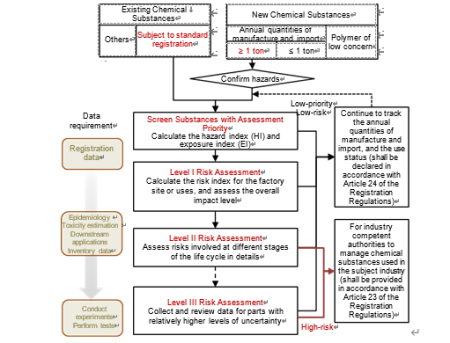Risk Assessment and Classified Management
Share to Line Share to Facebook Share to X Print ContentThere are numerous and diverse types of chemical substances. Currently, some 20,000 types of chemical substances are circulating within the country. To comprehend the potential hazards and risks associated with these chemical substances and establish an effective management approach, the adoption of scientific risk assessment tools and methods is imperative. These tools and methods aid in analyzing the potential hazards posed by chemical substances to human health and the environment, considering their present and future applications. This, in turn, facilitates the evaluation of the appropriateness of current control measures.
The assessment of chemical substance risks involves the collection, study, and comprehensive analysis of a substantial amount of professional data, along with simulation and estimation. This process demands a considerable volume of intricate information and a high degree of expertise. First of all, the registration system enables us to gradually control information on the types and usage quantity of chemical substances currently circulating within the country (including existing chemical substances and new chemical substances), as well as to collect current usable information. To effectively use resources, the screening of substances with assessment priority and a hierarchical assessment strategy shall be planned. Next, building upon the classification and grading outcomes and management goals, if substances are recognized through the screening process as having assessment priority, it becomes essential to gather or establish comprehensive information necessary for a hazard and exposure assessment. The risk assessment is conducted using a scientific methodology, and appropriate risk management measures shall be subsequently formulated based on the assessment findings.


Given the numerous types of chemical substances, the varied content and types of hazard and exposure information of chemical substances and the limited amount of information, it is essential to establish standard registration, hazard assessment, and exposure assessment tools to ensure the reliability, adequacy, and completeness of the information needed for risk assessment. This should be done by drawing upon other countries’ relevant experiences and approaches. Additionally, current domestic parameters should be integrated to create sample writing, instructional materials for instruments, and other educational resources. The pertinent information and tools should be made available to stakeholders for their reference and application, and they should be periodically reviewed and updated.
- Source:
- Ministry of Environment
- Published:
- 2023-08-11
- Updated:
- 2024-10-24
